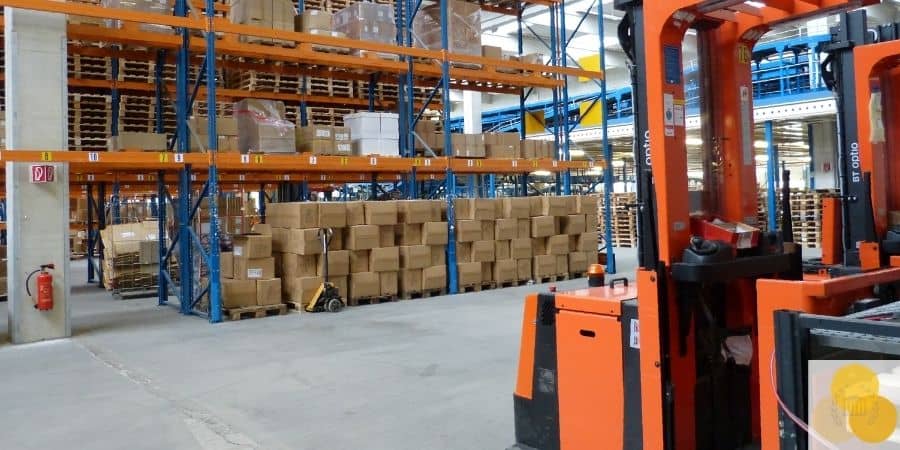Construction Site Accident
Workers and visitors at a construction site are at risk for injury. Injuries are caused by falling, getting hit by an object, or becoming injured by a machine. The occupational Safety and Health Administration (OSHA) found that over 20% of workers’ deaths in 2013 were in the construction field. If you have been injured or a loved one has died on a construction site, you may be able to recover.
The OSHA found that over 20% of workers’ deaths in 2013 were in the construction field.
Accidents Occurring On Construction Sites
A construction site is a dangerous area where many things can go wrong. Below is a list of the various accidents that occur on construction sites
● Falls- according to OSHA falls, are the leading cause of injury or death occurring on a construction site. Workers who are six feet or more above the ground are at risk for a severe fall.
● Defective or improperly secured ladders or scaffolding- employers have a duty to ensure the equipment is working properly, including providing safety measures to prevent falls from ladders or scaffolding.
● Electrical accidents- often, there is exposed wire on construction sites, along with jobs requiring electrical work.
● Collapsed walls, structures, or trenches- workers can become stuck and injured from having a building or dirt from a trench come crashing down on them. These structures and trenches should be reinforced if they are unstable.
● Falling objects or machinery: Due to construction sites’ nature, there are often structures and ground higher than the workers. Because of this, they are at risk of being struck by a falling object.
● Inhalation of chemicals: Chemicals, like asbestos, may be present in a construction site, and the workers may not even know it. Employers are responsible for knowing of potential chemicals and providing warnings and safety gear to protect their workers.
● Defective or dangerous equipment, machinery, or tools- a defectively manufactured or designed piece of equipment, machinery, or tool can cause severe injuries to the workers handling them.
Employers Responsibilities for Construct Sites
OSHA has many regulations describing the steps employers must take to ensure their workers’ safety. The regulations require employers to keep the workplace free from hazards, establish a hazard communication system, and provide employees with safe tools and equipment. OSHA also requires workers to wear appropriate helmets and safety equipment.
When it comes to potential fall accidents, OSHA provides more detailed requirements. To prevent falls, OSHA requires fall protection to be provided at four-foot elevations and five-foot elevations in shipyards. Furthermore, a railing, floor hole cover, or to-board must be used to protect workers from holes in the floor, around runways, elevated platforms and floors, and dangerous equipment. Other fall protection measures include handrails, safety nets, and safety harnesses and lines.

Liability for Construction Accidents
There will often be more than one party you can sue for injuries suffered on a construction site. Generally, the owner and developer will be responsible, and on larger projects, there will also be design and engineering professionals, contractors, subcontractors, and equipment and material suppliers. The general contractor has a responsibility for the overall safety of a worksite. Each subcontractor will have their safety responsibilities laid out in the contract.
In order to recover money in a premises liability case, the plaintiff must typically prove that the owner or manager was negligent.
How to Sue for a Construction Site Accidents
There are two ways to sue for an injury sustained on a construction site. Employees must seek benefits under workers comp in the majority of cases, while non-workers sue under negligence.
Workers' Compensation
Under workers’ compensation, the employee simply has to prove they were injured in their employment scope. If the employee was performing their job, they were likely in the course of their employment. As a result, the employer is responsible for covering medical bills and lost wages resulting from the injury.
Negligence
Non-workers, or people just visiting the construction site or walking by it, can recover if the person in control of the site acted unreasonably. The defendant must have known about the dangerous condition or should have known about the hazardous condition. Once becoming aware of the condition, the defendant then has a duty to fix it or warn others of the condition. Failure to do this results in the defendant being responsible for the plaintiff’s injuries and damages.

Legal Process in a Construction Site Accident Cases
The workers’ comp and negligence actions provide two different experiences. We take a look at what to expect in each of them below.
Workers’ Compensation
The employer is responsible for filing the claim with the insurer and the state workers’ comp board office. The workers’ comp board will approve or deny your claim. In the case of a denial, you then have an opportunity to appeal the decision. When you appeal a claim denial, they have the option to request a hearing. At the hearing, you will testify regarding the accident and the resulting injuries.
Before the hearing, the sides can settle before going through the appeal process. To assist in the settlement process, the employee and the insurance company will try mediation. A mediator is a neutral third party that acts as a go-between in the parties’ negotiations.
While an attorney is not necessary, it is always wise to have one. They will provide years of experience in workers comp claims and put you in the best position to succeed.
Negligence Lawsuit
When bringing a negligence action, the plaintiff utilizes the court system. However, your interaction with the court will be limited, and the court deals solely with your attorney. Once the case has is filed, discovery starts and your attorney will receive requests for information from the defendant’s attorney. Often, your attorney will be contacting you to collect the necessary information to respond. You will also have to attend a deposition, where the other side will ask you questions about the accident and your injuries.
Once the discovery process is over, then the sides will truly begin negotiating. Your attorney is required to advise you of any offer the defense makes, and you have the final say. If you cannot reach an agreement, the sides will move forward to court assisted settlement discussions involving mediations or settlement conferences with the court. If these options fail, then the court will order an arbitration or have a trial.
Finding The Right Lawyer For Your Construction Site Accident Case
Before jumping into the lawsuit, it is smart to consult with a personal injury attorney. Most personal injury law firms handle construction site lawsuits, making picking an attorney difficult because there are so many options. There are big firms, small firms, sole practitioners, and the dreaded settlement mills. Please do your homework before settling on an attorney and make sure it’s the right fit for you.







